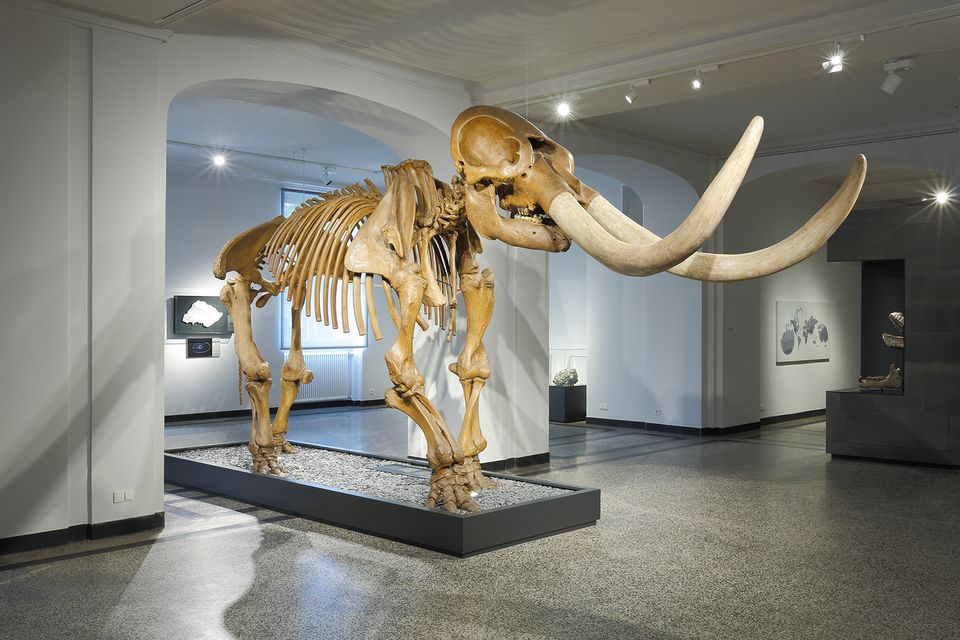
Skeleton of the Mastodon, excavated 1801–2 by Charles Willson Peale, bone, wood, and papier mâché, approx. 118 × 177 × 65 in., Hessisches Landesmuseum, Darmstadt, Germany, Photo: Wolfgang Fuhrmannek, © Hessisches Landesmuseum Darmstadt.
About this Object
This mastodon fossil is the same one Charles Willson Peale excavated and assembled for his Philadelphia museum. When it went on public display in December 1801, it was the largest known terrestrial being. Peale and Thomas Jefferson were eager to find natural wonders in the United States that would compete with the man-made wonders of the Old World.
Before Humboldt left the United States in 1804, he was honored with a celebratory dinner beneath this skeleton in Peale’s Museum. After that museum closed in 1847, the fossil went to Europe and found a buyer who took it to Darmstadt, Germany, where it has been ever since. This is the mastodon’s first return to the United States in more than 170 years.













